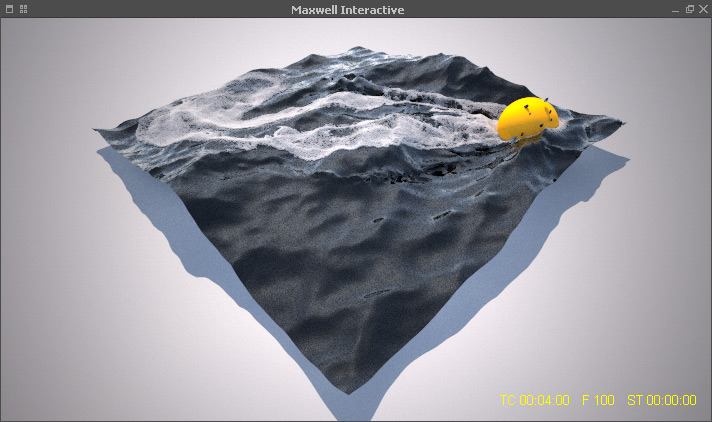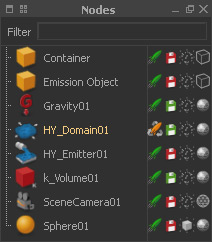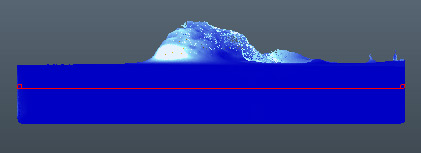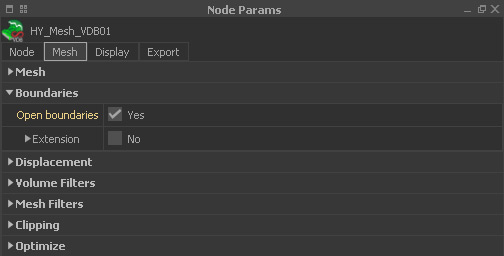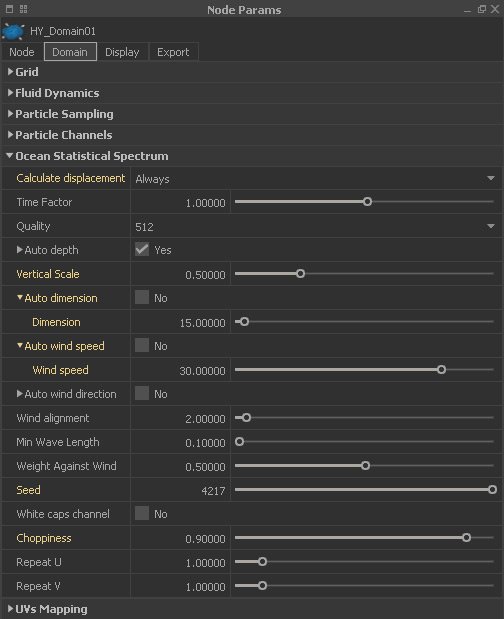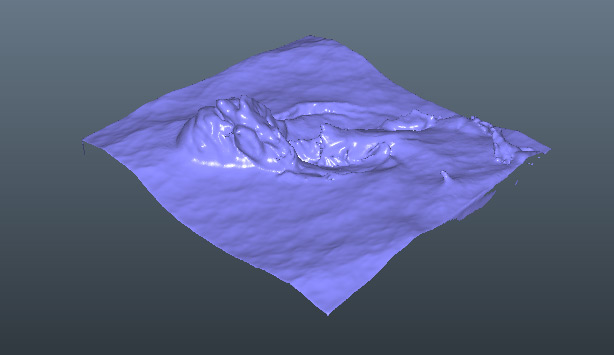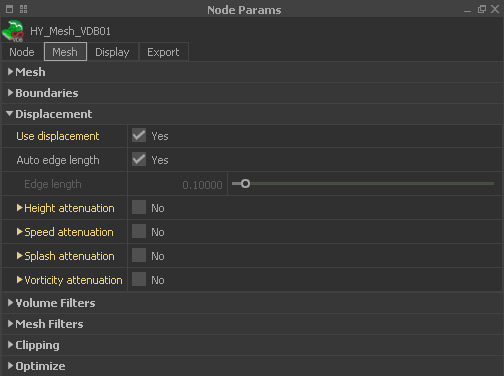HY - Displacement
Displacement, also known as ocean statistical spectrum, is a layer of small waves and ripples that is added to a Hybrido core fluid surface to enhance realism. The displacement itself is invisible and can only be seen in conjunction with a mesh.
- Create a basic → core fluid scene.
- Add some turbulence by moving an → animated object through the fluid.
- Simulate.
Here a → "Waterline" emitter has been added. The particles have been snapped to the mesh with the → "Snap Foam Particles" tool. Furthermore, the amount of waterline particles has been increased with the → "MultiPoint" option:
A Maxwell FIRE snapshot from the tutorial's result.
The Base Mesh
Before we proceed, it is important to set the (already simulated) domain to → “cache”:
- Click on the domain node's small green rocket.
- The yellow colour indicates the cache mode.
- Move the domain's viewport icon (plane with four boxes - here in red) to the upper third of the fluid as shown below.
Add a mesh – all settings are made under “Node Params”:
- Mesh shelf > Hybrido mesh VDB
- Boundaries > Open Boundaries > Yes
- The last action will remove all polygons outside and below the domain's viewport plane.
- Displacement > Use displacement > Yes
The Ocean Statistical Spectrum
Open the domain node's → “Ocean Statistical Spectrum”. There you will see a long parameter list, but just a few a really relevant for your daily work. The result can only be seen when you create a mesh. Here are the most important settings:
Calculate displacement
Set this option to “Always”:
- RealFlow will calculate a displacement map immediately using the default values.
- Whenever you change a value, the displacement is recalculated for the current frame.
Vertical scale
This parameter mainly depends on “Dimension”, but you should start with the default settings. If the surface is flat increase the value.
Dimension
If the level of detail is low, disable “Auto dimension” and increase this parameter. A good start is a value is around 2-3x the size of the domain's viewport plane (10 m by default).
Wind speed
This parameter removes spiky patterns, smoothes the surfaces, and creates the typical wavy look. A value between 20 and 30 m/s works best.
Seed
Enter any positive integer to change the waves' initial distribution.
Choppiness
Create sharp wave crests; start with values between 0.8 and 1.2.
The Displacement Mesh
Go to a frame with enough detail, splashy structures, and turbulence. Then select the mesh and click on Mesh shelf > Build mesh to create a single mesh from the current frame:
A possible result could look as in this image:
In order to proceed and refine your settings, change the domain's → “Ocean Statistical Spectrum” parameters and create test meshes until you are satisfied. Please also consider the → attenuation options, to remove the spectrum waves, for example from splashy structures or areas with high vorticity:
The Mesh Range
In the final step, the entire simulation range is meshed. Currently, the displacement has been created for a single frame:
- Reset the scene and simulate.
- The domain's “cache” mode prevents the fluid from being re-simulated, and only the displacement is calculated.
- The mesh is created simultaneously.
